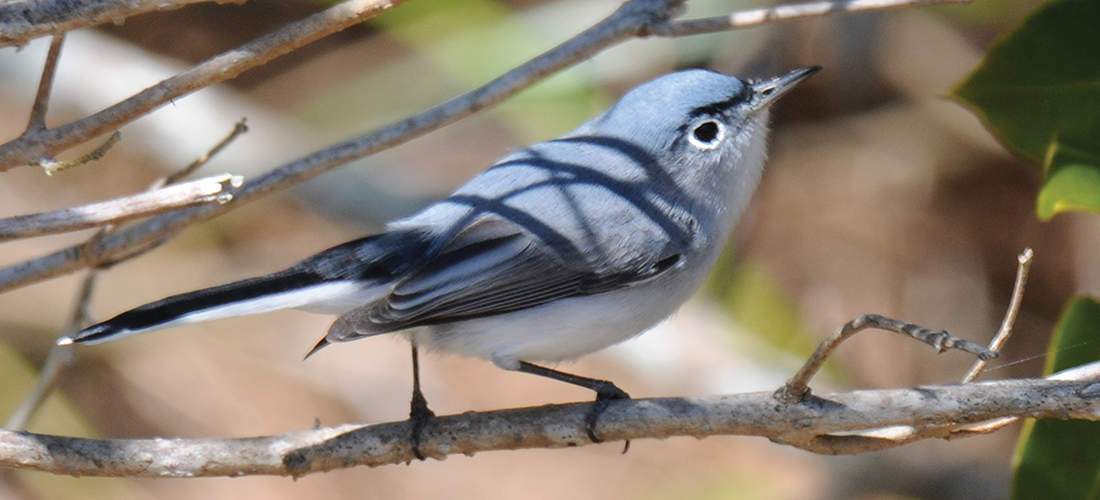
Harbinger of Spring
The blue-gray gnatcatcher heralds the seasonal migration in Central N.C.
By Susan Campbell
It wonít be much longer . . . the wheezy calls from blue-gray gnatcatchers will soon be echoing from the treetops, signaling the beginning of spring migration here in central North Carolina. But these tiny gray-and-white birds are not going to find you. You are going to have to find them. As they flit around searching for small insects, they tend not to stay in one spot long enough for a good look. But with patience and a sharp eye, a determined birder will spot the bird’s characteristic dainty bill, white eye ring and long black tail with white edges.
Some of these passing gnatcatchers will stay put and raise a family, or two, here in the coming months. The species is known to breed across most of the Eastern United States at lower elevations. Within the gnatcatcher family this is the only species that is truly migratory, although individuals that we encounter have not likely traveled northward very far. Wintering grounds may be as close as Florida though some gnatcatchers may wing their way back from as far away as Cuba or the Bahamas.
Despite their name, gnats do not form a more significant part of the bird’s diet. Foraging for any invertebrates they can find, a gnatcatcher will sometime capture insects and spiders that are too large to swallow. But this ingenious bird divvies its prey into smaller portions by banging the insects on a branch to dispatch them and then pulling their appendages off until they are small enough to swallow. Its secret weapon to uncover insects? A long tail that it will flick from side to side to disturb the vegetation and cause potential prey to fly into visual range.
The species is sometimes referred to as “Little Mockingbirds,” not so much for their plumage but for their tendency to incorporate elements and snippets of other birds’ songs into their own. Short songs involve wheezy “spee” notes. But longer songs, meant to better advertise territory in the spring, involve a variety of sounds: chips, whistles and mewing notes that are typically very high-pitched. When they cannot get their point across, males will chase one another, sometime ranging abroad as far as 70 feet or more. If things get particularly fierce, the competitors may even rise up, chest to chest, high in the air, with snapping bills in what looks like an odd game of “chicken.”
Here in the Piedmont and Sandhills, blue-gray gnatcatchers can be found in any forested area where there is a significant understory. This is a species that thrives on woody vegetation and an insect-rich environment. Nests tend to be high up in hardwoods and are constructed with fine grasses and a variety of soft materials. Furthermore, they always include an exterior layer of mosses or lichens that camouflage the small cup-like nests from predators. As with the only slightly smaller ruby-throated hummingbird, nests need to be almost invisible. Adult blue-gray gnatcatchers have no other effective means of defending the next generation than the ingenious use of camouflage. As it is, eggs and young are often located by small mammals, as well as climbing snakes and other birds. But the parents will readily build a new nest, even incorporating old nesting material to speed up the process, several times in a season, if need be.
So if you keep an eye as well as an ear out towards the end of the month, you may spot one of these spirited and industrious little birds. Tiny blue-gray gnatcatchers are certainly one of the most overlooked members of our summer bird fauna. However, I guarantee they will be out and about if you take the time to notice in the weeks ahead. OH
Susan would love to receive your wildlife sightings and photos at susan@ncaves.com.





